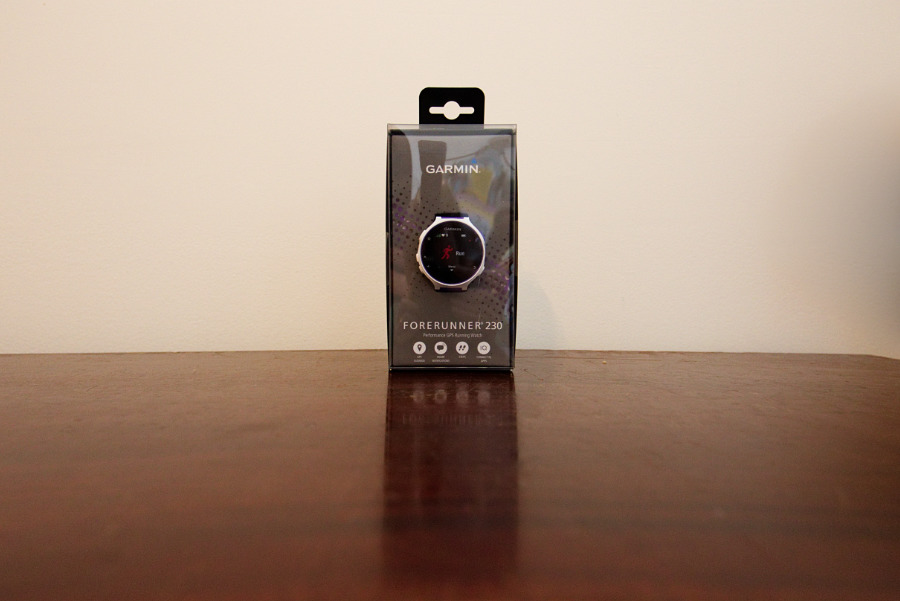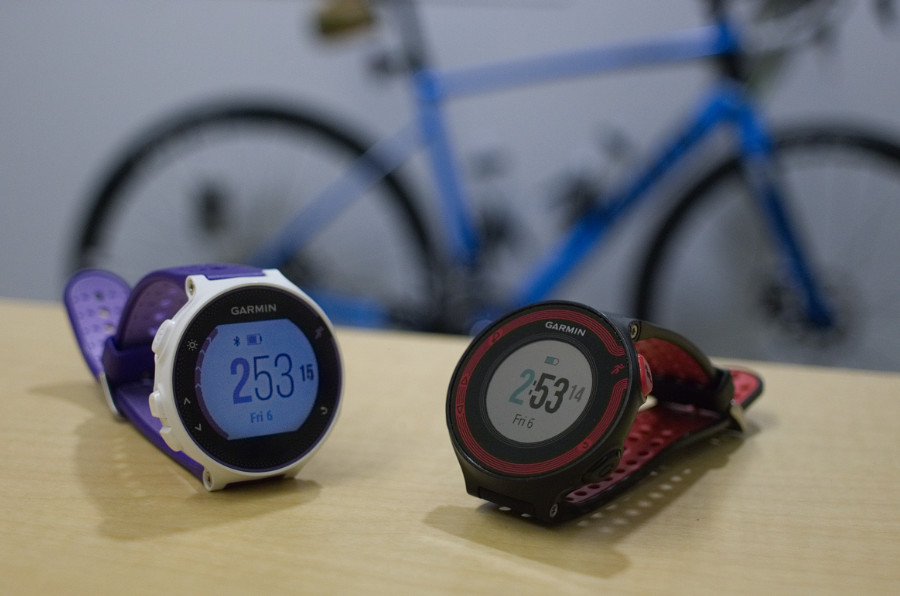Garmin Forerunner 230 vs. 220
How does the Garmin 230 running watch compare to the Forerunner 220?
Whether you’re a beginner or an expert, if you’re looking for a mid-range GPS running watch that has serious training features, there are several excellent options to choose from — but the Garmin Forerunner 230 stands out as one of the best.
Don’t get me wrong… there a many good choices available. For example, the TomTom Spark 3 Cardio has a similar price and a fantastic user interface, a built-in heart rate monitor, and 3GB of storage for music. But, in terms of out-of-the-box flexibility and having access to a powerful sports-tech ecosystem, it’s hard to beat Garmin.
Before the Forerunner 230 was announced, the go-to model in this category was the Forerunner 220, which is the watch I’ve owned and used for the past two years. The 230 and 220 are similar in many ways, but the differences are significant.
There are many capabilities in the 230 that the 220 lacks, such as being able to receive and display notifications from smartphones (emails, texts, incoming phone calls, social media alerts, etc.) and a step counter for daily fitness tracking. But, the real draw for me was getting access to Connect IQ.
Think of Connect IQ as an app store for your watch, similar to what you have on Apple and Android mobile devices, except that all of the apps are free (which is a nice perk). Some are just watch faces, enabling you to do things like stare at animated cats every time you check the time. But many apps add genuinely useful functionality, and enrich the experience in a rather profound way.
First impressions of the Forerunner 230 vs. 220
Before I logged my first workout with the Garmin 230, I already had a much stronger appreciation for the device than I ever did for my 220 — and this wasn’t just because I opted for the Purple Strike color, as opposed boring black.
The 230 has a larger screen, and longer battery life. It wants to be on your wrist all the time. You can choose different styles and capabilities that suit your tastes and interests. It isn't just a piece of training gear — it's a personalized smart watch.
It isn't just a piece of training gear — it’s a personalized smart watch.
If you just want a GPS watch to throw on for runs and that's it, the older Forerunner 220 may suit your needs well. However, if you decide to get into more advanced training with sensors like the Stryd running power meter, or the Moxy Monitor (which tracks muscle oxygenation), you’re going to be much happier with a watch that can run Connect IQ apps.
Initial setup and use of the Garmin 230
When I first setup the Forerunner 230, the process was a little bumpy, but it wasn’t especially difficult. Anything that involves software updates and pairing new Bluetooth devices for the first time usually isn’t incredibly smooth, and this was no exception.
After syncing the 230 with my Garmin Connect account, one of the first things I did was add it to the gear tracking section of SportTracks. I set SportTracks to automatically group my running shoes, Garmin HRM strap, and Stryd power meter when running activities are auto-synced from Garmin Connect.
I didn't get a new HR strap with the 230, I use the same one that came bundled with my Forerunner 220, and not surprisingly, it operates perfectly with the 230. I always wear my HR strap when I run, so when I was checking out the stock data screens on the 230, it defaulted to display heart rate info, in addition to time, distance, etc.
Digging into data fields and apps
I didn't spend too much time with the stock data screens on the 230. I happen to be also conducting a long-term review of the Stryd running power meter, so I was eager to dip into the Connect IQ apps that support it.
One of the differences between the 220 and the 230 is that you can display up to four metrics on each data screen with the 230, while the 220 is limited to three. This is one of the benefits of the larger screen on the 230. However, I found I had to squint too much with four data fields on the screen, and later switched it to display only three. I also noticed that the backlight on the 220 is a bit brighter than the 230, so it isn't better in every way.
The flexible data fields are one of my favorite features of Garmin watches. I often switch up my training, and I love being able to swap around what's displayed on the watch. And, I like that you can easily change these on the watch itself, without needing set it up on a computer and sync.
This flexibility is also found in the older Garmin 220, but the Garmin 230 is easily the better option, because you can download and use a wide variety of data screens from Connect IQ. In my case, I downloaded and used the Stryd data field. Full disclosure: I also downloaded and tried the Bali Wood animated cat watchface.
Daily use and workouts
I record my daily commutes to work, because I either walk or ride my road bike. I never drive. Prior to using the 230, I would record my commutes with apps like Runkeeper and Endomondo, because my old 220 could only had activity settings for runs. I would then sync these activities to SportTracks through Tapiriik.
The 230, on the other hand, features dedicated activity profiles for both indoor and outdoor runs and bike rides. So now, instead of needing to rely on mobile apps to track my walks and rides, I'm just using the Garmin 230, and I'm much happier. It's great not having to dig a phone out of my pocket, or use its battery to track my commutes. The watch is just right there on my wrist.
The Forerunner 230 has been great for tracking workouts. It quickly obtains GPS signals and has preformed accurately. Using Connect IQ apps and data fields does seem to add some latency to button presses (you press a button, wait a few beats, and then the desired action happens), but it isn't a deal breaker. Still, it would be preferable if the throughput always remained lightning fast.
I successfully created a custom interval workout in my SportTracks calendar to hit and maintain target cadences, and loaded it into the 230. It worked like a charm. I'm also pleased that the 230 has dedicated Bike activities built-in, which I've been using to track my cycling workouts. Plus, you can customize and save separate data screens for runs and rides.
In conclusion...
The Forerunner 220 is still a great running watch. If you can find one at a discounted price and you don't mind missing out on the new features, larger screen, and longer battery life of the 230, then you should strongly consider getting it.
However, having owned and used both of these watches, the 230 stands out as the far better option. I never thought I wanted smart-watch capabilities, but I've enjoyed using them. It's nice to be able to screen calls and check the weather on my wrist.
Don't worry about additional notifications unnecessarily complicating your life. The smartwatch features of the 230 can easily be turned off. But don't knock it until you've tried it. To my surprise, I've found it's actually less invasive to quickly glance at notifications on my wrist as opposed to my phone.
Ultimately, it's the additional muscle that the Forerunner 230 gives you for training that makes it the superior choice. Tracking footsteps and trying to hit daily goals is a fun novelty, but the power that the Connect IQ platform gives you for serious training tools is what makes this one of the best mid-range GPS watches out there.
| Article written by Sam Mallery, Director of Marketing, Zone Five Software Inc. |



